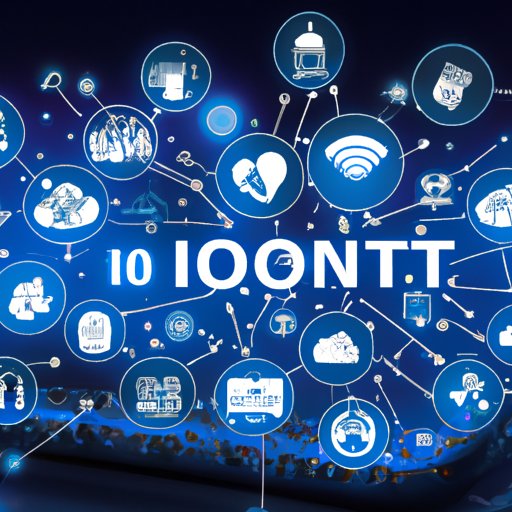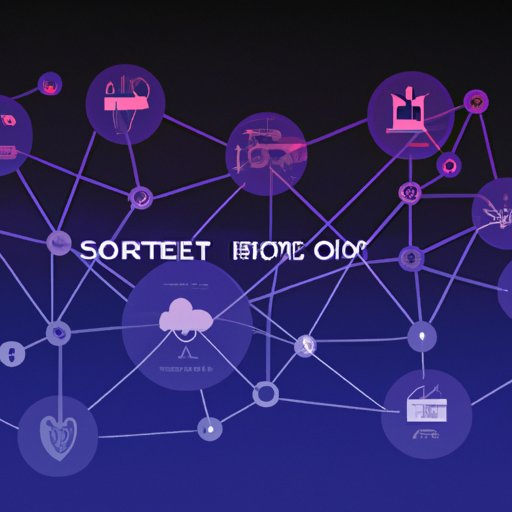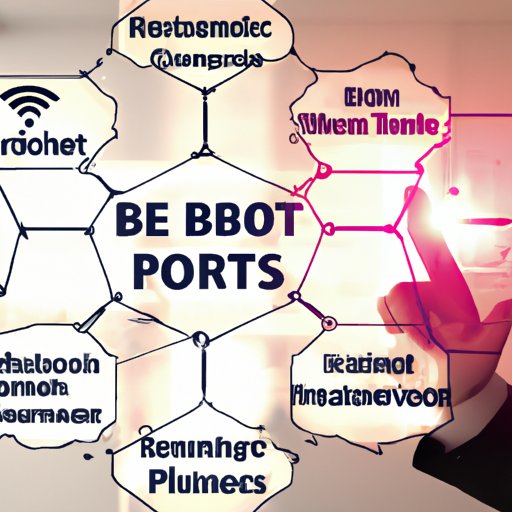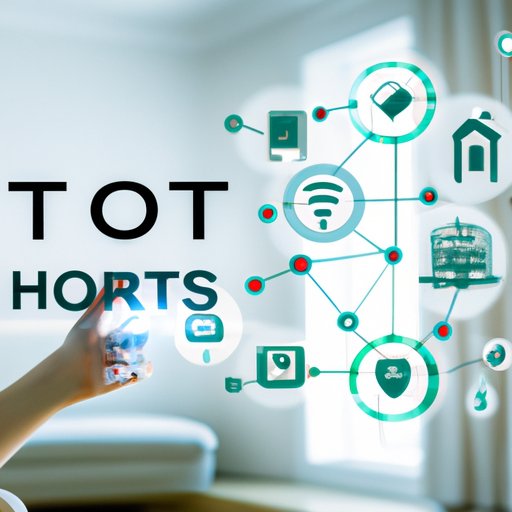Introduction
The Internet of Things (IoT) has revolutionized the way we interact with technology, transforming everyday items into smart devices that can be controlled remotely. But what exactly are IoT technologies and how do they work? In this article, we’ll explore the basics of IoT technologies, how they are transforming different industries, top use cases, security challenges and solutions, and their future potential.
Exploring the Basics of IoT Technologies
To understand IoT technologies, it’s important to first define what they are. The term “Internet of Things” refers to the network of physical objects—such as vehicles, buildings, home appliances, and other items embedded with electronics, software, sensors, and connectivity—that enable these objects to collect and exchange data.
At the core of an IoT system are three components: sensors, actuators, and communication networks. Sensors gather data from the environment and send it to the cloud for storage and analysis. Actuators are used to control devices and respond to the data collected by the sensors. Communication networks provide the infrastructure for connecting all the components of the system together.
There are various types of IoT devices, ranging from wearables to connected homes to automated vehicles. Wearables are devices like fitness trackers and smartwatches that are worn on the body. Connected homes are equipped with sensors and devices that can be controlled remotely, such as lighting and thermostats. Automated vehicles use sensors and cameras to detect obstacles and navigate roads.

How IoT is Transforming Industries
IoT technologies are transforming a wide range of industries, from manufacturing to healthcare. One of the primary benefits of IoT is automation, which allows machines to take over mundane or repetitive tasks, freeing up human workers to focus on more complex tasks. IoT also enables companies to collect and analyze data in real time, allowing them to make quicker, more informed decisions.
In addition, IoT technologies are helping businesses streamline processes, reduce costs, and improve customer experience. For example, using sensors and cameras, retail stores can track customers’ movements and preferences, allowing them to tailor their offerings to meet customer needs.
Top Use Cases of IoT
The possibilities of IoT technologies are almost limitless, but some of the most popular use cases include connected homes, smart cities, wearable technology, and automated vehicles.
Connected homes feature devices like thermostats, lights, and security systems that can be controlled remotely. This allows homeowners to save energy and money, as well as increase safety and security. Smart cities leverage IoT technologies to monitor traffic, optimize energy usage, and improve public safety.
Wearable technology, such as fitness trackers, have become increasingly popular in recent years. These devices allow users to track their health and fitness goals, as well as monitor their sleep patterns. Lastly, automated vehicles use sensors and cameras to detect obstacles and navigate roads, making driving safer and more efficient.

Security Challenges and Solutions of IoT
While IoT technologies offer many benefits, they also come with certain risks, particularly when it comes to security. One of the biggest risks is the potential for data breaches, where hackers can access sensitive information stored on IoT devices. Additionally, device vulnerabilities can be exploited by malicious actors, allowing them to gain control of the system.
Privacy concerns are also an issue, as IoT devices collect large amounts of data on users, including location and activity tracking. To address these issues, companies need to put measures in place to protect user data and ensure that devices are secure. This includes encrypting data, using strong passwords, regularly patching devices, and monitoring for suspicious activity.
The Future of IoT
Experts predict that the number of connected devices will continue to grow in the coming years, with Gartner estimating that there will be more than 20 billion connected devices by 2020. This growth will likely be driven by the increasing adoption of IoT technologies in the industrial and consumer sectors.
However, there are still challenges that need to be addressed before widespread adoption can occur. These include an insufficient IT infrastructure, lack of standardization, and the cost of implementing IoT technologies. Despite these challenges, experts believe that the future of IoT is bright, with potential applications in a variety of industries.

Benefits and Risks of IoT Technologies
It’s important to understand both the benefits and risks of IoT technologies before investing in them. On the one hand, IoT technologies can help businesses automate processes, collect and analyze data, and streamline operations. On the other hand, they come with certain security and privacy concerns that need to be addressed.
According to a study by McKinsey, “Overall, the potential benefits of IoT outweigh the risks. Companies should not be deterred from investing in IoT-enabled solutions due to concerns about security or privacy. With the right security architecture in place, these risks can be managed effectively.”
Conclusion
In conclusion, IoT technologies have the potential to transform a wide range of industries, from manufacturing to healthcare. By automating processes and collecting and analyzing data, businesses can streamline operations and improve customer experience. However, it’s important to understand the potential risks and take steps to mitigate them.
(Note: Is this article not meeting your expectations? Do you have knowledge or insights to share? Unlock new opportunities and expand your reach by joining our authors team. Click Registration to join us and share your expertise with our readers.)
